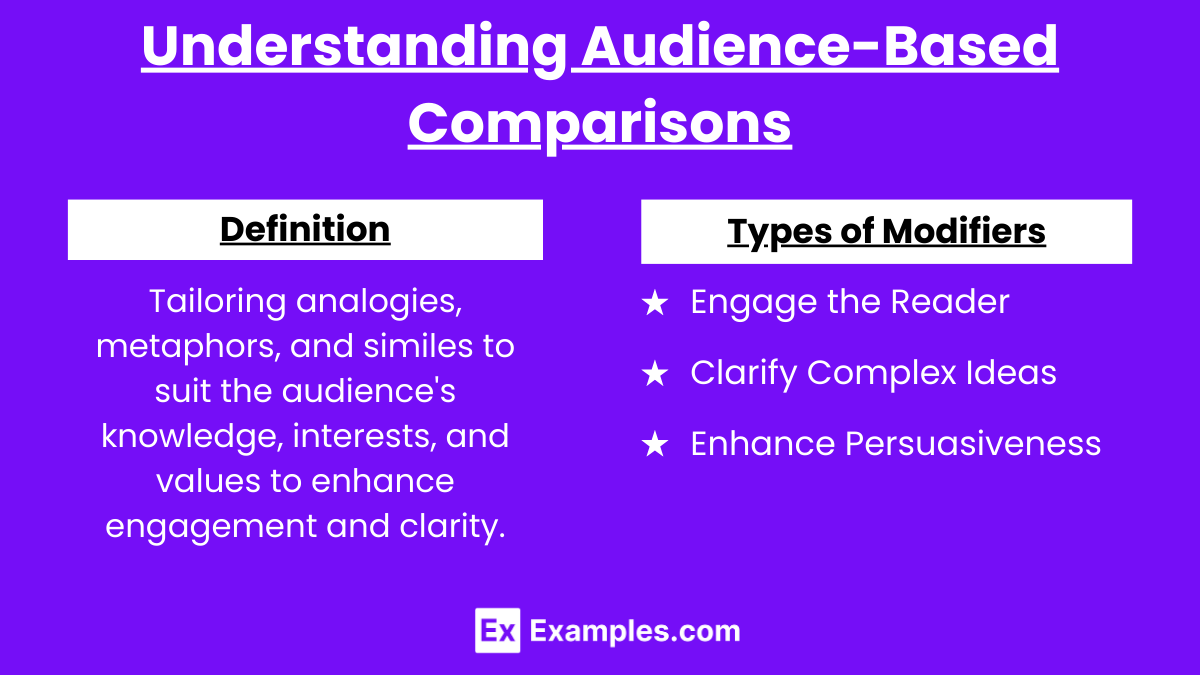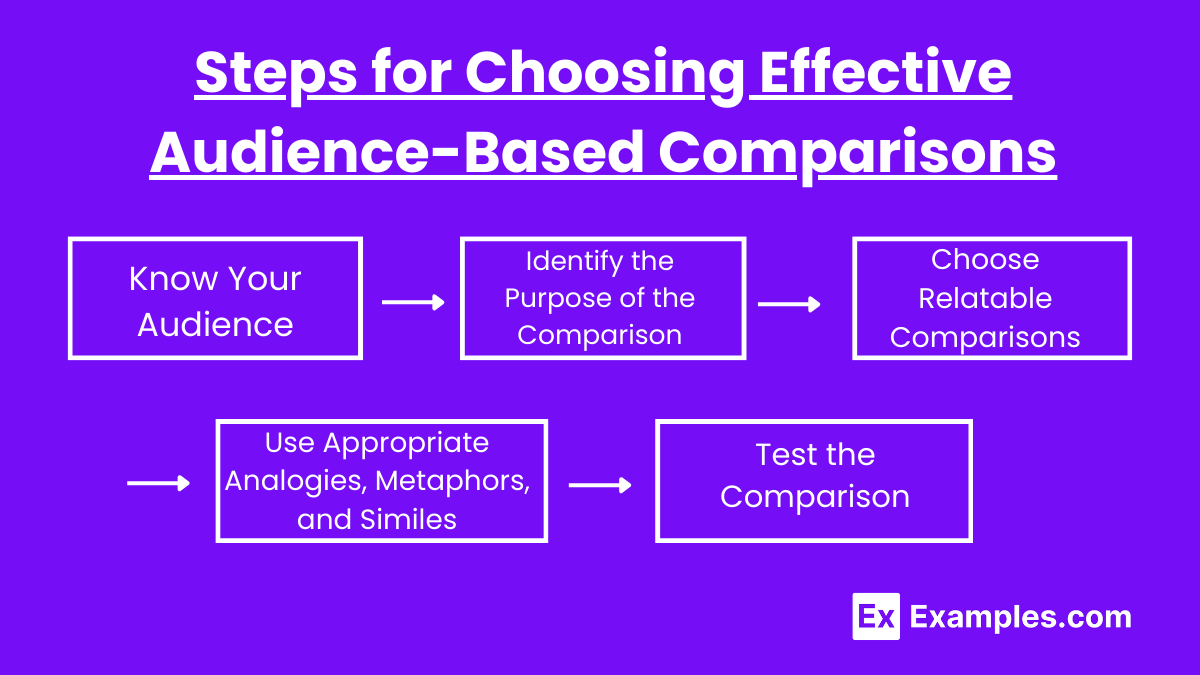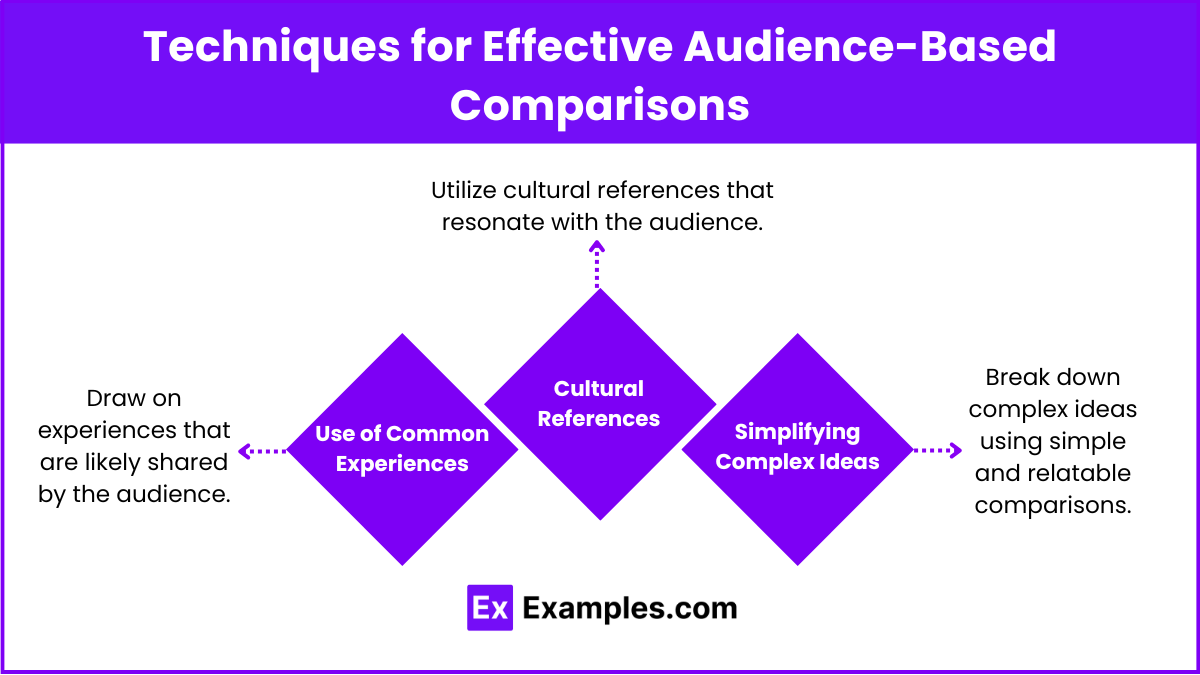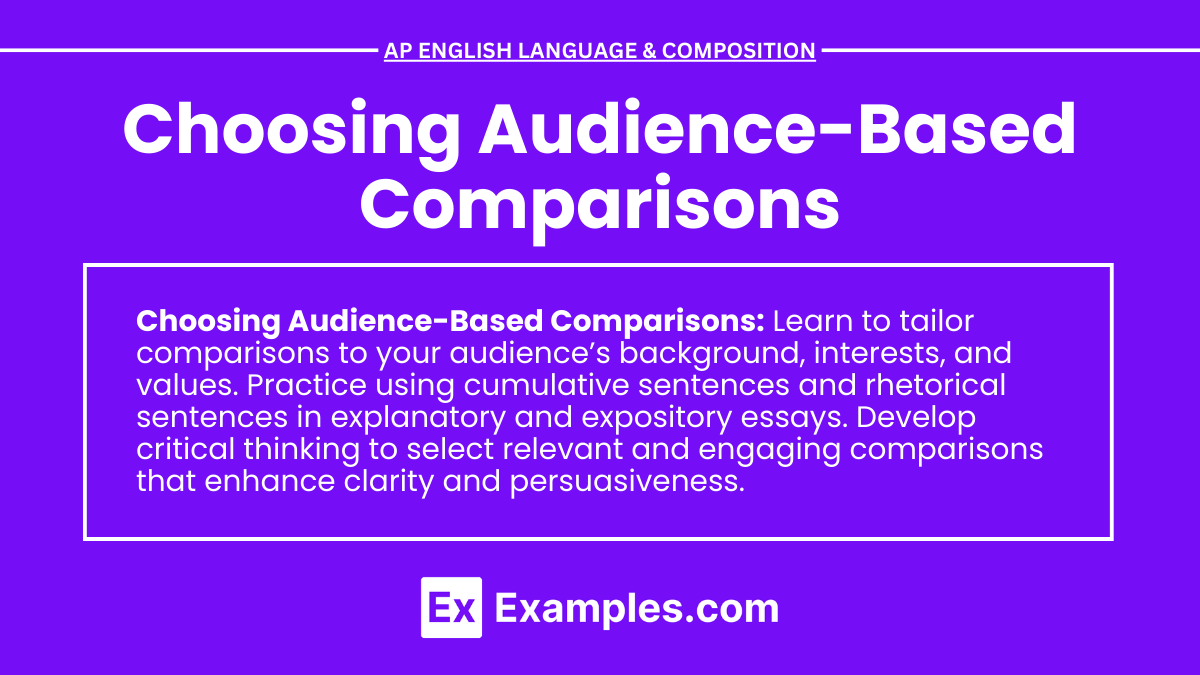In the AP English Language and Composition exam, selecting appropriate audience-based comparisons is vital for creating persuasive and relatable essays. Whether engaged in argumentative writing or delivering an argumentative speech, using rhetorical sentences and cumulative sentences tailored to your audience ensures your arguments resonate deeply. This involves understanding your audience’s background, interests, and values to choose comparisons that enhance clarity and engagement. Mastering this skill makes your writing more effective and compelling, enabling you to communicate complex ideas in a way that is accessible and impactful.
Learning Objectives
By studying the topic of choosing audience-based comparisons, students will achieve several key learning objectives. They will enhance their critical thinking skills by selecting appropriate comparisons tailored to their audience. Students will learn to use cumulative sentences and rhetorical sentences to make their arguments more engaging in explanatory essays and expository essays. They will develop the ability to craft a strong final thesis statement that effectively incorporates audience-based comparisons, ensuring their writing is clear, persuasive, and relatable. Mastery of these techniques will enable students to produce well-rounded, impactful, and audience-focused essays.
Understanding Audience-Based Comparisons

Definition
Audience-based comparisons involve tailoring analogies, metaphors, and similes to suit the knowledge, interests, and values of your specific audience. This technique makes complex ideas more relatable and understandable.
Purpose
- Engage the Reader: Capture the audience’s attention with familiar references.
- Clarify Complex Ideas: Make abstract or complex concepts more accessible.
- Enhance Persuasiveness: Strengthen arguments by connecting with the audience’s experiences and values.
Steps for Choosing Effective Audience-Based Comparisons

1. Know Your Audience
- Definition: Understand the demographics, interests, values, and knowledge level of your audience.
- Techniques:
- Research: Learn about the audience’s background, education, and cultural context.
- Analyze: Consider what is important or relevant to the audience.
- Example: For an audience of high school students, use comparisons related to social media, current trends, or popular culture.
2. Identify the Purpose of the Comparison
- Definition: Determine what you aim to achieve with the comparison (e.g., simplify a concept, highlight a similarity, or emphasize a difference).
- Techniques:
- Clarity: Choose comparisons that clearly illustrate your point.
- Relevance: Ensure the comparison is directly related to the argument or concept.
- Example: To explain the complexity of the human brain, compare it to a supercomputer for an audience interested in technology.
3. Choose Relatable Comparisons
- Definition: Select comparisons that your audience can easily relate to and understand.
- Techniques:
- Familiarity: Use references that are familiar to the audience.
- Simplicity: Avoid overly complex or obscure comparisons.
- Example: When discussing teamwork, compare it to a sports team for an audience that is familiar with sports.
4. Use Appropriate Analogies, Metaphors, and Similes
- Definition: Employ analogies, metaphors, and similes that fit the audience’s context and enhance the argument.
- Techniques:
- Analogies: Draw parallels between two similar situations.
- Metaphors: Describe something by referring to it as something else.
- Similes: Compare two things using “like” or “as.”
- Example: “Explaining photosynthesis to students by comparing it to baking a cake.”
5. Test the Comparison
- Definition: Evaluate the effectiveness of your comparison.
- Techniques:
- Feedback: Seek feedback from peers or mentors.
- Clarity: Ensure the comparison makes the concept clearer, not more confusing.
- Example: Before finalizing an essay, ask a peer if the comparison between government functions and school administration makes sense.
Techniques for Effective Audience-Based Comparisons

Use of Common Experiences
- Definition: Draw on experiences that are likely shared by the audience.
- Example: “Writing an essay is like building a house – both require a strong foundation and careful planning.”
Cultural References
- Definition: Utilize cultural references that resonate with the audience.
- Example: “The internet is the modern-day equivalent of the Wild West – full of opportunities but also dangers.”
Simplifying Complex Ideas
- Definition: Break down complex ideas using simple and relatable comparisons.
- Example: “Understanding quantum physics is like trying to learn a new language – it takes time and practice.”
Examples
Example 1: Argumentative Essay on Climate Change
Audience: General public Comparison: “Reducing carbon emissions is like putting out a fire – the longer we wait, the more damage it causes.”
Example 2: Expository Essay on Technology in Education
Audience: Educators Comparison: “Integrating technology in the classroom is like adding new tools to a toolbox – it enhances teaching and learning.”
Example 3: Explanatory Essay on Economic Policies
Audience: Business students Comparison: “Economic policies are the rules of the game – they determine how businesses operate and compete.”


